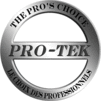Другие краски форсунок
Выбор производителя


Пушка брызга / краски / безвоздушного / руководство - КС1
Безвоздушного распылителя, типа КС1, используется для покрытия поверхностей, таких как металл, пластмасса, керамика, дерево и подобные материалы, а также другие подходящие поверхности. Традиционные лакокрасочные материалы краски, красители, водорастворимые краски, клеи, масла, смазки и т. д.
Пистолет КС1 и может использоваться для обработки абразивных материалов покрытия при эксплуатации...
Пистолет КС1 и может использоваться для обработки абразивных материалов покрытия при эксплуатации...

Пушка брызга / краски / безвоздушного / руководство - КС1
Безвоздушного распылителя, типа КС1, используется для покрытия поверхностей, таких как металл, пластмасса, керамика, дерево и подобные материалы, а также другие подходящие поверхности. Традиционные лакокрасочные материалы краски, красители, водорастворимые краски, клеи, масла, смазки и т. д.
Пистолет КС1 и может использоваться для обработки абразивных материалов покрытия при рабочих давлениях ниже 5 МПа (50 бар). Материал покрытия подается на краскопульт в жидкой форме под высоким давлением материал.
Пистолет работает по принципу безвоздушного другими словами, струя формируется исключительно за счет высокого давления жидкости при прохождении его через сопло. После выхода из сопла, струя принимает форму продиктовано сопла. Струя направлена на заготовку и эффективного распыления струи не совсем как теоретически можно шире.
Частицы факела достичь гораздо более высоких скоростях, чем с пистолетом управляется сжатым воздухом. Соответственно, пропускная способность материала выше и струя более целенаправленной (другими словами, вихревой зоны меньше). Размер и форму струи можно изменить, только меняя насадки. Диаметр сопла диаметр определяет объем материальных потоков, в то время как размер и геометрия эллиптическая открытия форсунки определяет высоту и ширину струи (форму эллиптического конуса).
Пистолет КС1 и может использоваться для обработки абразивных материалов покрытия при рабочих давлениях ниже 5 МПа (50 бар). Материал покрытия подается на краскопульт в жидкой форме под высоким давлением материал.
Пистолет работает по принципу безвоздушного другими словами, струя формируется исключительно за счет высокого давления жидкости при прохождении его через сопло. После выхода из сопла, струя принимает форму продиктовано сопла. Струя направлена на заготовку и эффективного распыления струи не совсем как теоретически можно шире.
Частицы факела достичь гораздо более высоких скоростях, чем с пистолетом управляется сжатым воздухом. Соответственно, пропускная способность материала выше и струя более целенаправленной (другими словами, вихревой зоны меньше). Размер и форму струи можно изменить, только меняя насадки. Диаметр сопла диаметр определяет объем материальных потоков, в то время как размер и геометрия эллиптическая открытия форсунки определяет высоту и ширину струи (форму эллиптического конуса).

Пушка брызга / краски / безвоздушный - дуэт ч
Дуэт Н безвоздушного распыления малярных пистолет, который отличается своей однородной лакировки. Атомизация это краскопульт получается без воздуха из специального сопла....

Пушка брызга / краски / безвоздушный - дуэт ч
Дуэт Н безвоздушного распыления малярных пистолет, который отличается своей однородной лакировки. Атомизация это краскопульт получается без воздуха из специального сопла. Он характеризуется безвоздушного механизм и структура сжатого воздуха. Эта струя усиливается с дополнительным сжатым воздухом, который подается через скважины, которые созданы специально для адаптации к специфическим свойствам материала сопла. Эта функция гарантирует оптимальный мягкой струи. Снижение рабочего давления может использоваться вместо давления используется при безвоздушного распыления самым дополнительно уменьшая пушки и износ насоса. Части проблема может быть эффективно с покрытием из-за низкой этот самолет оправиться и мягкая функция двигателя, а также.

Опрыскиватель живопись / пара
Паровой процедурой спрей порожденных компрессоры с мягким паром заменяет обычный распылитель воздуха. Сжатый воздух используется только для передачи жидкости через...

Опрыскиватель живопись / пара
Паровой процедурой спрей порожденных компрессоры с мягким паром заменяет обычный распылитель воздуха. Сжатый воздух используется только для передачи жидкости с помощью насоса или баллона под давлением. Материал распыляется с помощью пара при выходе из сопла. Физические свойства перегретого водяного пара обеспечивают равномерное и щадящее покрытие с очень низким оправиться эффект. Это поддерживает очень высокий уровень заявлению, что привело к минимальным за спрей. Кроме того, его Нижняя реактивного давления приводит к уменьшению шума. Снижение краска туман уменьшает воздействие на работающего, а также очистки и эксплуатационные расходы.


Распылитель электростатический - каскад
Каскад-это высококачественный прибор, который предназначен и создан, чтобы...

Распылитель электростатический - каскад
Каскад-это высокое качество устройство, которое главным образом конструировано и создано для обеспечения современной и изысканной отделкой для повышения своих возможностей. Он идеально построен, чтобы использоваться для нескольких импортированное тавро пушек покрытия порошка включая легко выбрать пистолет, ПГ1 poweder пушки и блока пороха.


Пушка брызга / краски - 9110
Модель 9110 картина краскопульт разработанный про-ТЭК. Это под покрытием пистолет, который может доставить воздушным давлением 50 фунтов на квадратный дюйм и расход воздуха 10 куб. фут.

